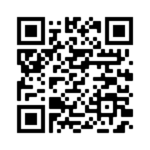by Debbie Ferguson and Fredrick “Flee” Lee

What do an administrative assistant, exercise physiologist, and music composition major have in common? They are all among our top hires for software developer roles.
Many stellar engineers have no formal certifications or degrees; some didn’t go to college. We believe that there’s no single “best” route to a role. Often, less-traveled roads can provide invaluable experience and unexpected perspectives.
We’ve walked these unconventional paths ourselves as a self-taught hacker and a first-generation college graduate. We’ve worked at companies where we were the “only” on a team — the only Black engineer, the only trans engineer, or the only woman — and we’ve been told, implicitly and explicitly, that we don’t fit the mold. We’ve been in the room when hiring committees passed up qualified candidates in favor of those with more traditional pedigrees.
Those experiences fueled our passion to hire differently and to encourage other leaders to do the same.
The importance of building diverse organizations has been well-established. Diversity is linked to greater innovation and performance; McKinsey recently found that more diverse companies had higher profits than their more homogeneous counterparts.
In contrast, a lack of diversity can lead to convergent thinking. People who share training and experiences tend to reach a consensus faster because they view problems the same way. However, the long-term impact is less harmonious, resulting in narrower thinking and products that don’t meet their potential.
Building teams with different skill sets and life experiences requires intention. By designing inclusive hiring practices — and letting go of the notion that there’s one ideal candidate type for a role — we can create more opportunities for a range of candidates who are more than capable. Here’s how.
Focus on potential rather than pedigree.
We asked developers at Gusto to talk about their backgrounds and noticed a common theme: many discovered a passion for building software through a mix of self-study, experimentation, and formal classes. Others found their love of engineering through seemingly unrelated jobs, including being a paralegal and a video editor.
We both began our careers with different toolsets than we use today. Many, if not most, skills can be taught on the job; what matters is the desire and core capabilities to succeed. Jobs are changing so rapidly that adaptable learners are in high demand. Many top companies, including Google, Apple, and Bank of America, now focus less on “official” qualifications — many are no longer requiring traditional degrees — and we’re excited to see this trend continue.
The truth is that the skills that seem ideal for a role today may no longer even be a fit in a year. When you’re screening and interviewing candidates, look for ways to explore the capabilities that will enable the individual to thrive as everything around them changes. Consider asking questions like the following:
- Describe a problem and how you contributed to a solution. A candidate may exhibit problem-solving abilities in unexpected ways. They may have maximized yield in their garden or reorganized a charity event to be more impactful.
- What were you doing the last time you looked at a clock and realized you had lost all track of time? An open-ended question like this can help you uncover intellectual curiosity and understand what motivates someone.
- Describe a project you’re proud of that involved working closely with other people. Give candidates the opportunity to demonstrate self-awareness and teamwork; for example, by discussing how they raised up their team and vice versa.
Look for the sparkles in your talent pool.
Unconventional hiring is an exercise in holding up diamonds to the light. You’re training your eye to spot what glitters, which might be someone’s volunteer or advocacy work, music, writing, or an insightful Twitter thread.
One of our most prolific interviewers bases her questions on a candidate’s LinkedIn profile — but not the section you might think. She jumps to interests and the people they follow, rather than starting with education, endorsements, or even experience. Those sparks can be more telling than a job title.
Events and contests can also help you expand your talent pool to people who may not yet see themselves as experienced professionals. We find coding competitions to be rich sources of passionate and unconventional talent. One of our best hires for security engineering was a financial analyst who excelled in a cybersecurity contest. In these contests, sparkling doesn’t necessarily mean winning. Runners-up often make strong candidates because they’re less focused on rushing to complete a challenge and more interested in methodically solving a problem.
Help unconventional candidates envision themselves at your company.
Recruiting non-traditional hires sometimes involves convincing someone they can flourish in a role they can’t yet imagine. Job descriptions, your company’s LinkedIn profile, and your website’s careers section are all venues to reinforce your culture and ethos. Use those opportunities to authentically describe what it’s like to work at your company, then consider how those descriptions may resonate with candidates with different career experiences and backgrounds. For example, look for ways to minimize jargon; insider language could discourage candidates from applying, even if they have a real shot.
Another way to welcome unconventional applicants is to paint the big picture of a role rather than a checklist of specialized skills, degrees, or years of experience. When crafting job descriptions, we focus on what the candidate can expect to do day-to-day and what we’re looking for at a high level, such as an “interest in complex product development problems.” If we mention specific programming languages, we’ll clarify that you don’t need to know them because there will be training on the job.
When writing job descriptions, focus on the essential components of a given role. For every requirement or responsibility, keep asking why it’s crucial. For example, when we’re writing the job description for an engineering role, we could require that applicants have experience with Amazon Web Services, the cloud service provider we use, but why? We need engineers who understand cloud computing — and the security needs and scale that come with it. That experience with cloud services is essential, but a specific provider is not. We need someone who knows how to drive a car, not someone who knows how to drive a particular make and model. The job description should reflect that; otherwise, we narrow the applicant pool unnecessarily.
Break convention for onboarding and training.
Unconventional hiring transcends recruiting and interviewing. To help a wide range of hires flourish, you need support them at every stage of the employee lifecycle. For example, you might reassess short- and mid-term goals and milestones for the role if a candidate will be learning on the job. In this case, instead of measuring whether a new hire solves a specific problem in their first 30 days, you could evaluate how they’re contributing to the team’s creativity and their peers’ well-being.
Another piece of the puzzle is communicating that you expect new hires to spend time and energy developing new skills. Skill-building opportunities can take various forms, from mentorship to office hours to formal curricula.
Inclusive hiring is just the beginning; ongoing investment is key to supporting candidates once they’re on board.
We encourage every company to think beyond the confines of traditional hiring. Prepare for new hires who shake up your worldview and challenge assumptions about career paths. Continue investing in their growth. Together, chart an unconventional course toward the destination: an inclusive workplace for extraordinary talent.
